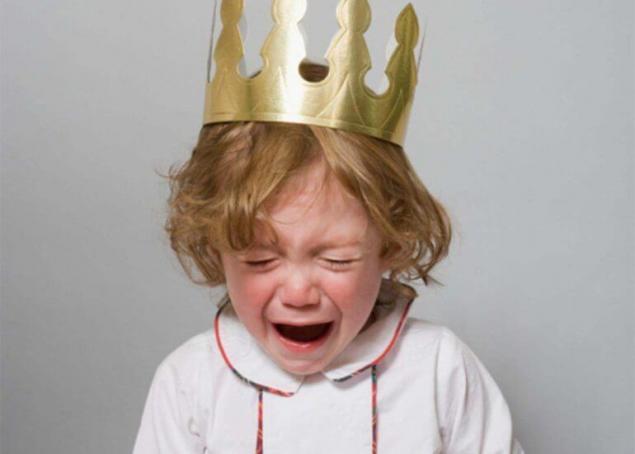283
Anger triggers: What causes hysteria in the child
Understand, accept, survive
Knowing what’s going on in a child’s brain when he starts one of those horrible scenes where you want to fall through the ground and give 10 years of your life to stop his tantrums immediately can prevent, or at least mitigate, a lot of things. Research by neuroscientist Douglas Fields helps us.

Primitive instincts
“Neuroscience has found that neural connections specifically designed for anger and aggression respond to certain stimuli,” says Douglas Fields, a researcher at the National Institutes of Health in Maryland. This is the part of the alarm that defines the danger. A key concept is that anger and aggression are evolutionary mechanisms necessary for a person to engage in combat and defend himself.” The primitive times, when humans were often hunted by predators, are long gone, and these defense mechanisms remain. Adults (not all) are able to control these primitive instincts, and children’s self-control is not yet developed: they are the same – whether to defend themselves from the saber-toothed tiger, or demand cartoons here and now.
Anger triggers
What causes outbursts of anger and aggression? The scientist says that there are 9 universal triggers, reacting to which, any person loses mental balance:
Don’t try to stop the tantrum before it starts.
If the “button” for children’s tantrums is a ban, then perhaps allow them everything? Dr Fields says it's important to recognize the fact that children can't control their anger, but adults can: I think parents need to understand that telling children not to get angry, not to get psychotic, is to appeal to a part of the brain that hasn't yet developed. It's another part of the brain that's angry and is now controlling children's behavior. All you have to do is wait for the child to calm down and then you can talk to them to solve the problem.

You can be angry, but you need to learn self-control.
“Do not tell children that they should not be angry. It is better for them to know why they are angry. It's normal. There is no need to suppress anything, says Dr Fields. Remember that a child’s brain develops, and the environment in which children grow up affects how they learn to cope with impulses of aggression. This is not only about positive attitudes in the family, but also about the fact that children need to be taught to neutralize anger reactions, to teach self-control - first of all by their own example.
Sport and gender
In Fields’s book Why We Snap, skier Wendy Fisher recounts how her father extinguished her negativity, which manifested itself in athletes’ discontent syndrome. This is not only unsportsmanlike behavior (breaking rackets, throwing ski poles), but also a sign of insufficient self-control. “The biggest benefit of sports is developing self-control under stress,” says Dr. Fields.
Emotional literacy: 5 ways to teach a child to express feelings
Parental Code – Read to all parents!
Remember that the chemistry of hormones in different sexes is different. Therefore, in terms of aggression and its types, parents need to be careful: girls and women in particular tend to direct aggression at themselves, so if your daughter does not rush at you with her fists, this does not mean that she is well in control of her anger.
Credit Alison Zeidman
Source: womo.ua/detskaya-isterika-po-nauchnomu/
Knowing what’s going on in a child’s brain when he starts one of those horrible scenes where you want to fall through the ground and give 10 years of your life to stop his tantrums immediately can prevent, or at least mitigate, a lot of things. Research by neuroscientist Douglas Fields helps us.

Primitive instincts
“Neuroscience has found that neural connections specifically designed for anger and aggression respond to certain stimuli,” says Douglas Fields, a researcher at the National Institutes of Health in Maryland. This is the part of the alarm that defines the danger. A key concept is that anger and aggression are evolutionary mechanisms necessary for a person to engage in combat and defend himself.” The primitive times, when humans were often hunted by predators, are long gone, and these defense mechanisms remain. Adults (not all) are able to control these primitive instincts, and children’s self-control is not yet developed: they are the same – whether to defend themselves from the saber-toothed tiger, or demand cartoons here and now.
Anger triggers
What causes outbursts of anger and aggression? The scientist says that there are 9 universal triggers, reacting to which, any person loses mental balance:
- Life or Death: Protecting Yourself
- Insulting – Protecting Your Reputation
- The family - protecting their offspring
- Home - Protecting Your Asylum
- Partner - Protection of your chosen one
- Public Order: Protecting Freedom and Justice for All
- Resources – Protecting Your Property
- Tribe: Protecting People in Your Circle
- Stop – Protecting yourself from yourself
Don’t try to stop the tantrum before it starts.
If the “button” for children’s tantrums is a ban, then perhaps allow them everything? Dr Fields says it's important to recognize the fact that children can't control their anger, but adults can: I think parents need to understand that telling children not to get angry, not to get psychotic, is to appeal to a part of the brain that hasn't yet developed. It's another part of the brain that's angry and is now controlling children's behavior. All you have to do is wait for the child to calm down and then you can talk to them to solve the problem.

You can be angry, but you need to learn self-control.
“Do not tell children that they should not be angry. It is better for them to know why they are angry. It's normal. There is no need to suppress anything, says Dr Fields. Remember that a child’s brain develops, and the environment in which children grow up affects how they learn to cope with impulses of aggression. This is not only about positive attitudes in the family, but also about the fact that children need to be taught to neutralize anger reactions, to teach self-control - first of all by their own example.
Sport and gender
In Fields’s book Why We Snap, skier Wendy Fisher recounts how her father extinguished her negativity, which manifested itself in athletes’ discontent syndrome. This is not only unsportsmanlike behavior (breaking rackets, throwing ski poles), but also a sign of insufficient self-control. “The biggest benefit of sports is developing self-control under stress,” says Dr. Fields.
Emotional literacy: 5 ways to teach a child to express feelings
Parental Code – Read to all parents!
Remember that the chemistry of hormones in different sexes is different. Therefore, in terms of aggression and its types, parents need to be careful: girls and women in particular tend to direct aggression at themselves, so if your daughter does not rush at you with her fists, this does not mean that she is well in control of her anger.
Credit Alison Zeidman
Source: womo.ua/detskaya-isterika-po-nauchnomu/























